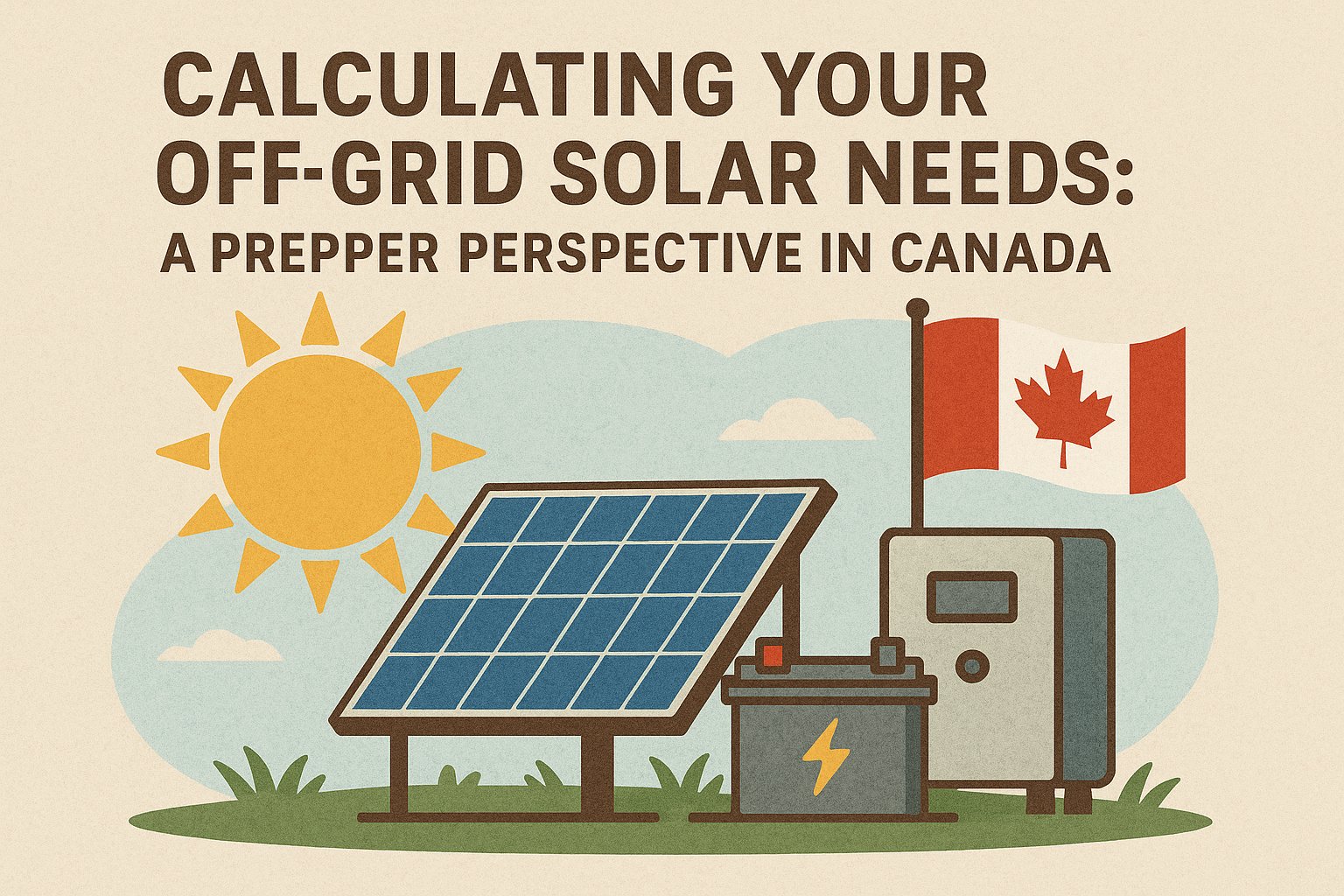As a Canadian prepper, you know that self-reliance isn’t just a philosophy—it’s a necessity. Whether you’re preparing for a grid-down scenario, long-term wilderness living, or just want more independence, an off-grid solar power system is one of the smartest investments you can make. But how much solar power do you actually need? Let’s break it down in practical, no-nonsense terms—true north strong and self-sufficient.
Step 1: Know What You Want to Power
Start by listing your essential devices and appliances. In a grid-down scenario, think about needs, not wants. Here’s a sample of what many Canadian preppers prioritize:
- LED lighting
- Fridge/freezer (12V DC or high-efficiency AC models)
- Water pump (for well or cistern)
- Wood stove fan or pellet stove (if electrically assisted)
- HAM radio or CB radio
- Laptop or tablet
- Battery chargers (AA, AAA, etc.)
- Internet router or Starlink (optional but useful)
Create a table like this for your own situation:
| Device | Watts | Hours/Day | Watt-Hours/Day |
|---|---|---|---|
| LED Lights (5 bulbs) | 50 | 4 | 200 |
| Fridge/Freezer | 100 | 10 | 1000 |
| Water Pump | 300 | 0.5 | 150 |
| Laptop | 60 | 3 | 180 |
| Radio | 20 | 2 | 40 |
| Total | — | — | 1570 Wh/day |
Step 2: Factor in Canada’s Seasonal Reality
Canada’s solar productivity varies wildly. In Central Ontario, for example, you can expect around:
- Winter: 2–3 sun hours/day
- Summer: 5–6 sun hours/day
Always size your system for winter, when energy needs often increase and solar production decreases.
Step 3: Calculate Solar Panel Requirements
To calculate the panel wattage you’ll need:
Daily Usage ÷ Average Sun Hours = Required Panel Wattage
Using our example of 1,570 Wh/day:
1,570 ÷ 2.5 = 628 watts
To be safe (due to losses, snow cover, inefficiencies), multiply that by 1.5:
628 × 1.5 = 942 watts
Round up and plan for at least 1,000 watts (1kW) of solar panels.
Step 4: Choose Your Battery Storage
You’ll need to store enough energy to get through nights and cloudy days. A good starting point is 2–3 days of autonomy.
So, 1,570 Wh/day × 3 = 4,710 Wh or 4.7 kWh
If you use 12V batteries:
4,710 Wh ÷ 12V = 393 Ah
For a 24V system (more efficient for larger setups):
4,710 ÷ 24 = 196 Ah
Use LiFePO4 (lithium iron phosphate) batteries if possible—they’re safer in cold weather, lighter, and longer-lasting than lead-acid.
Step 5: Pick the Right Charge Controller & Inverter
- Charge Controller: Make sure it can handle your solar array’s voltage and current. Use MPPT (Maximum Power Point Tracking) for efficiency in northern latitudes.
- Inverter: Choose a pure sine wave inverter, sized 25–50% higher than your peak load. If your max load is 800W, go for a 1,000–1,200W inverter.
Step 6: Winterizing Your Solar Setup
Canadian winters are brutal—prepare your system accordingly:
- Mount panels at a steep angle (45–60°) to shed snow.
- Elevate batteries off cold floors, insulate or heat battery enclosures.
- Overbuild your system to compensate for short days and snow losses.
- Keep a generator backup with fuel stabilized and ready to go.
Final Thoughts
Going off-grid in Canada isn’t just about plugging in some panels—it’s a strategic move that demands forethought, planning, and winter-proofing. But once it’s up and running, you’ll have a reliable, renewable source of energy that can keep you warm, safe, and connected, no matter what’s going on in the world.
Remember: it’s not about perfection—it’s about resilience.
Stay charged, stay safe, and keep prepping.








